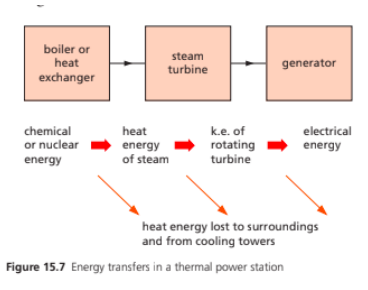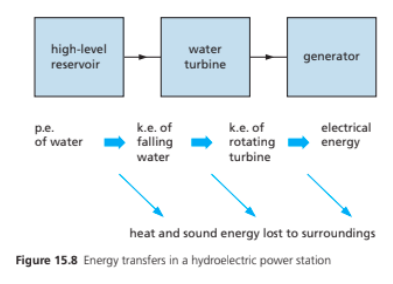Energy Resources: Electricity Generation (GCSE Physics)
Energy Resources: Electricity Generation
Generating Electricity
So far we’ve looked at how energy resources can be used in heating and transport. Energy resources can also be used to generate electricity.
Electricity can be generated using renewable or non-renewable energy resources.
Non-Renewable Energy Resources
Here are some examples of non-renewable energy resources used to generate electricity:
- Thermal power stations. Heat energy is used to turn water into steam. The steam drives a turbine, which then drives a generator to produce electrical energy. Non-renewable energy sources may be used as the energy source to heat the water, such as coal which is a fossil fuel. Another example is the use of nuclear fuels, for example uranium or plutonium.

In thermal power stations, cooling towers are used to condense the steam from the turbine, back into water. Therefore heat energy is lost from the cooling towers, which is a waste of energy. This means that thermal power stations have an overall efficiency of around only 30%. Gas-fired power stations are more efficient than thermal power stations. The hot gases released by the turbine are used to produce more steam. The steam is then used to generate more electricity using a steam turbine and a separate generator. This means that less energy is lost overall.
Renewable Energy Resources
As we explained in a previous tutorial, renewable energy resources such as hydroelectricity, wind, wave, tidal and geothermal resources are used to generate electricity.
Here are a few examples of renewable energy resources used to generate electricity in a bit more detail:
- Solar Power. Solar energy from the Sun can be used to generate electricity. Solar panels convert light into heat energy. A solar furnace can produce heat energy, which can then be used to convert water into to steam. The steam turns a turbine to produce electricity using a generator.
- Wind Turbines. These work similarly to solar power. Wind causes the blades to rotate on a wind turbine. The rotating blades will then turn a generator which will generate electricity. Wind turbines supply a huge amount of electricity, so are very cost effective.

Some of the causes of energy loss seen with non-renewable energy resources, such as water cooling towers, are not used with renewable energy resources. This means that generating electricity using renewable energy resources is usually more efficient and cost effective.





Still got a question? Leave a comment
Leave a comment